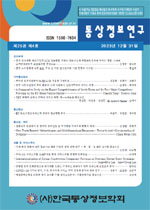
New Trade Remedy Methodologies and Multidimensional Responses : Towards Anti-Circumvention of Dumping
New Trade Remedy Methodologies and Multidimensional Responses : Towards Anti-Circumvention of Dumping
본 논문은 EU와 미국의 우회방지 규정과 조사 방식을 조사하고 우리나라의 반덤핑 관세에 대한 효률적인 우회덩핑 방지 규정을 제시하고자 한다. EU는 우회덤핑 방지를 위해 우회덤핑을 EU 또는 제3국에서 단순히 부품을 조립하여 수출하거나 제품을 사소한 변경을 통해 관세율이 낮은 생산자를 통해 수출하는 것으로 규정하였고, 미국은 제3국에서 조립 또는 완성한 제품, 사소한 변경 제품, 이후 개발된 제품으로 정의하였고, EU와 미국의 구체적인 기준과 실제 사례 연구를 통해 효율적 시스템을 검토하였다. 우리나라는 포괄적 우회덤핑 방지를 위한 제도가 미비하여 반덤핑 관세 실효성이 떨어지고 있어 이를 보완하여 급변하는 세계무역환경 속에서 우회덤핑 등 해외 불공정 무역행태로부터 국내시장을 실효성 있게 보호하기 위해서는 EU와 미국과 같은 우회덤핑 규정 제정이 매우 시급한 실정이다. 이에 따라 관세법 51조 2항 신설(우회덤핑)을 통해 국내시장에서 효과적으로 우회덤핑을 방지하여 보다 공정한 경쟁환경 마련이 필요하다.
This paper is to examine anti-circumvention measures in the European Union (EU) and the United States (US) and propose the ideal circumvention prevention models in Korea. To combat circumvention of anti-dumping measures, the EU defined circumvention as export of a product in parts and assembly in a EU or a third country, slight modification of the product, export through a producer with a lower duty rate. US has defined it as goods assembled or completed in the US or in third countries, goods with minor changes, later-developed product. This study examines the specific criteria and real-world case studies in both the EU and the US, shedding light on their legal frameworks and enforcement procedures. The paper emphasizes the importance of South Korea's need for a comprehensive circumvention system and the potential implications of such a development. In a rapidly evolving global trade landscape, implementing robust anti-circumvention rules is crucial to ensuring fair competition and safeguarding domestic industries. By drawing inspiration from the experiences of the EU and the US, South Korea can bolster its trade defense mechanisms, protect its economic interests, and promote a level playing field for all stakeholders. This paper underscores that South Korea's new circumvention rules have the potential to enhance the country's trade policy and foster a more equitable and secure trading environment, both domestically and internationally.
Ⅰ. Introduction
Ⅱ. Literature Review
Ⅲ. EU-USA Anti Circumvention Regulation
Ⅳ. Legislation for New Anti-Circumvention
Ⅴ. Conclusion and Implication